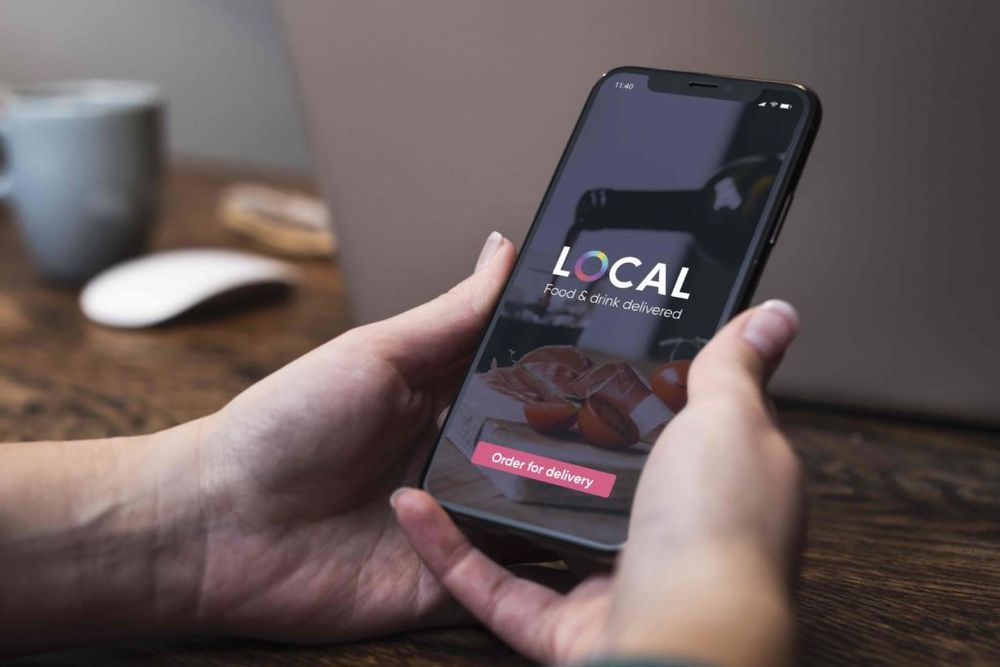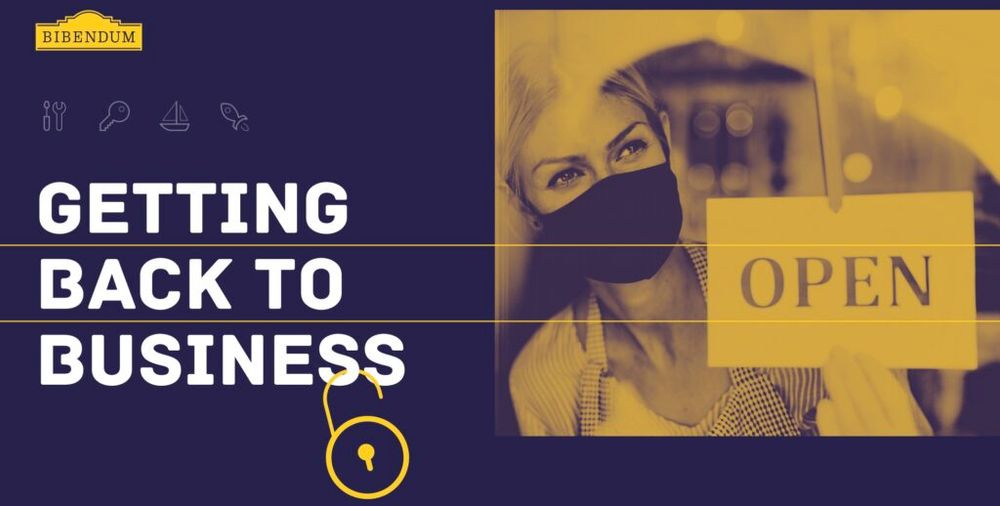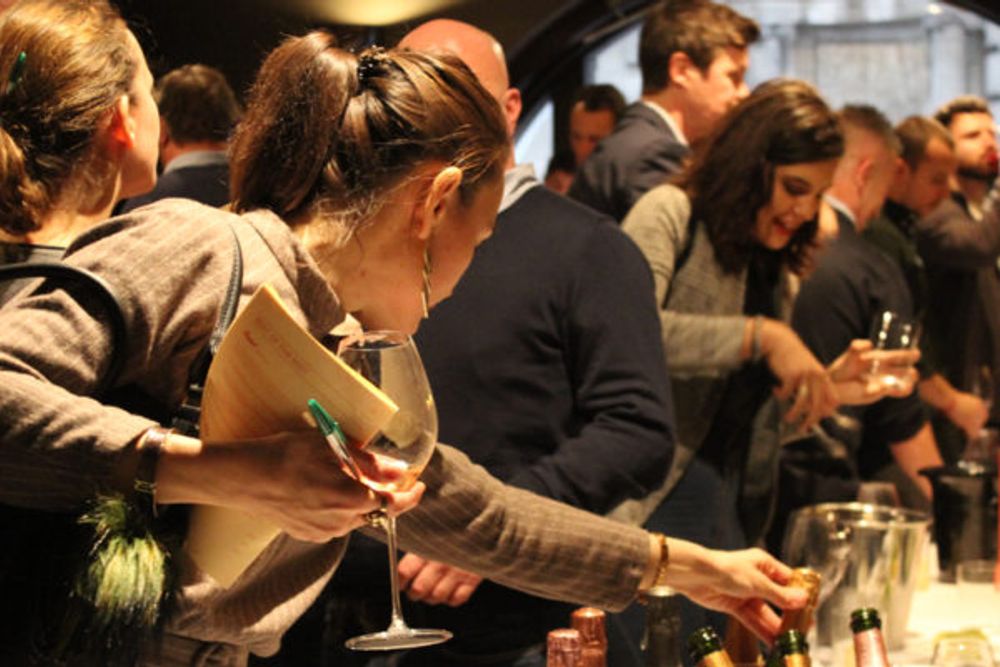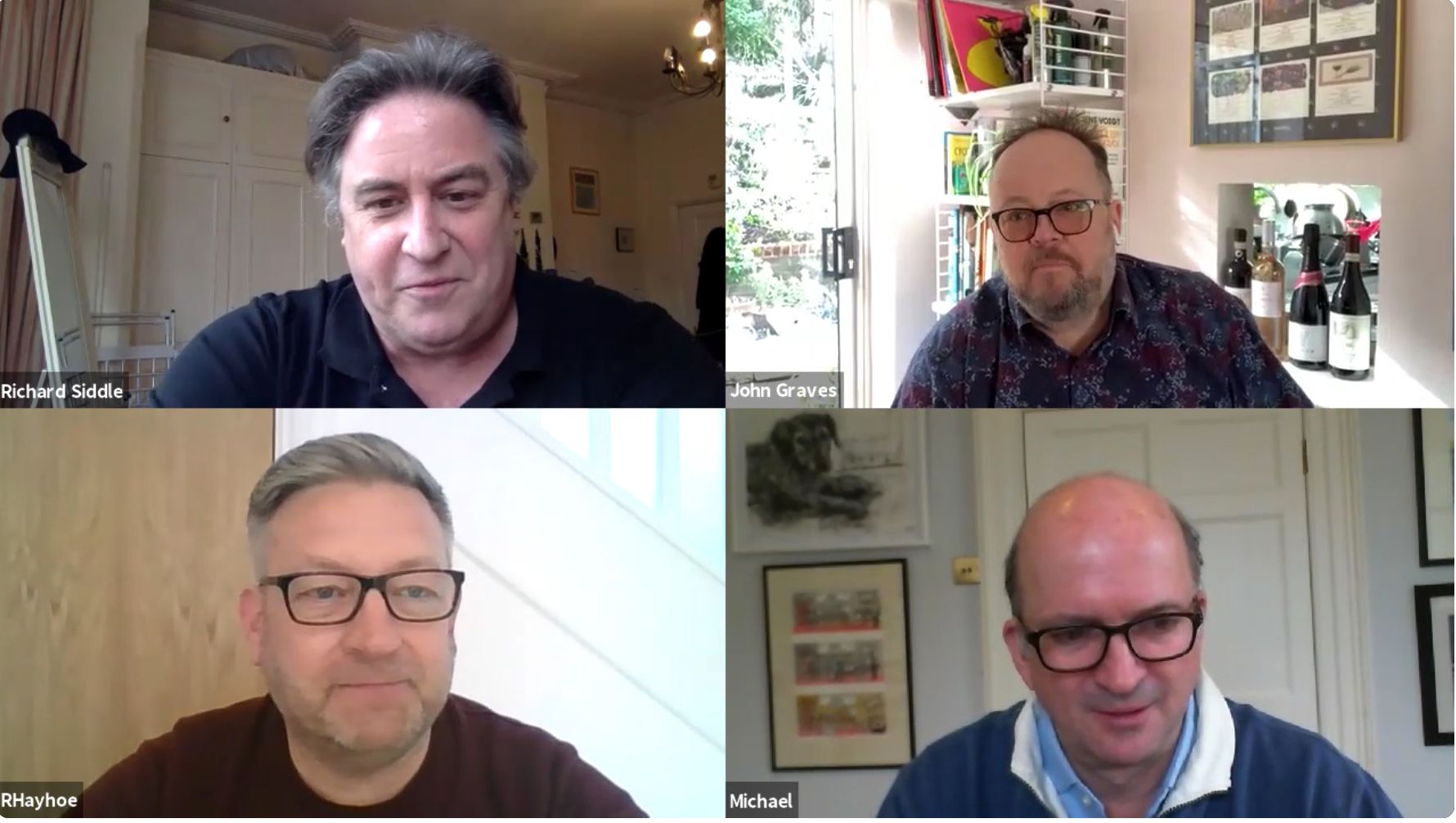In the second part of The Buyer’s analysis into Bibendum’s lockdown performance we talk to chief executive, Michael Saunders, John Graves, on-trade channel director, and Richard Hayhoe, group head of marketing. Click here to read the first part.
For years companies have been very proud of the mission statements they have for their business, that are usually plastered all over the reception when you go and visit. But to really understand how a company ticks, you need to get to know its culture, its DNA that gets passed on from employee to employee. That’s a lot harder to sum in a few management consultancy words and have engraved on a wall.
It was noticeable how many times the “culture” of Bibendum came up during our interview, but noticeably it was not chief executive Michael Saunders that wanted to beat the “culture” drum.
It was on-trade channel director, John Graves. He says the hands on, caring approach the business has towards its customers that it has been able to show throughout the Covid-19 crisis is very much “the culture” that Saunders has built and “instilled” at Bibendum over the years. A way of working that, he believes, many other distributors are “envious of”.
“The harder we practice it, the better we get at it. This whole lockdown has shown that. We have not lost a single customer and gained lots,” says Graves.
(Click here for Bibendum’s John Graves and Richard Hayhoe on how its unique culture and way of working makes it different from its competition)
It also means its customers, claims Graves, don’t see Bibendum as a big national distributor, but rather the personal relationship they have with “Georgie who looks after Dulwich and Clapham”. “It’s become even more apparent now.”
The group’s marketing director, Richard Hayhoe, believes Bibendum’s personal approach also carries through to its customer marketing team and differentiates the company from its competitors. “We help our customers sell the products that we sell them. That’s different,” he explains.
“We give them the the insights, we help them with intelligence on how to create a list, we help them with profitability, and how you construct a great by the glass list.”
Inter-dependent relationships
It’s that inter-dependancy that both sides have with each other that makes its relationship with its customers so more meaningful, he claims. “It also makes good business sense because they turn and sell more stock more quickly because we have put the right products in there.”
He says his team is getting more requests to work with customers on the “science” behind the wine lists they have and why they work so well with their particular clientele. “I think we can proud that is a slight difference with us.”

Bibendum built an app, LOCAL, in the first lockdown to help restaurants, bars and independent merchants promote their wines to local customers
Hayhoe points to how fast it was able to develop and push the Local app out to its customers in the first lockdown which allowed them to register and promote whatever delivery and pick up services they were offering. He is sure the support it was able to give then, will have “a part to play” in the future.
“People who were not big on social media we have been able to help support them go online, with what sort of content they need and what a social media strategy looks like.
“We know now that 56% of customers will check a website before making a booking. So we have helped customers become digitally savvy. It’s the right thing for us to do. We have shared our experience in the way we connect with them, so they can connect with their customers. I think we can be really proud of that.”
As Bibendum’s own expertise in this area has grown it has been able to pass it on to its customers and hopefully build loyalty and better understanding of both businesses as a result, he says.
Investing in customer marketing
(Click here for Bibendum’s Richard Hayhoe on the value and effectiveness of good targeted marketing and customer analysis)
Marketing is often one of the first investments to be cut back in difficult times and it is testimony, he says, to Saunders, the Bibendum board and wider C&C Group, just how much it believes in what good marketing can do.
“Good businesses,” he claims, “really see the value in marketing and connecting their customers and building loyalty with their customers.” This is particularly important when the sales people can’t go in and see them.
It is such a vital part of what a professional drinks distributor should be doing, he stresses.
‘My ability to say to John we did a producer feature on Paul Pujol, and we have seen a 150% increase in hits of his products on the website,” he says. “You are not in a world now where you are just chucking out brochures and doing above the line advertising.”
It can now measure the effectiveness of its marketing campaigns and determine which activities with which publications or platforms resulted in the most sales. Or look at heat mapping and traffic figures to its website to determine when is the best time to post content.
“It’s fair to say I have always believed in marketing, it’s one of Bibendum’s strengths” says Saunders. “It re-inforces our relationship with our customer and increases the stickiness of that. It also helps support the efforts of our sales team.”
Insights to help sales teams
Graves confirms the support the sales team now gets through insights and marketing means there is so much more “science” and data driven decisions that determine which wines now go onto certain wine lists – right through to fine dining, white table cloth restaurants.
“We will use that science in a way that works for them,” explains Graves. So for a Michelin star restaurant, for example, it might identify say the 12 producers that its data shows are right for its wine list. “That’s really powerful and I know it’s powerful because I have seen the reaction it has had from people.”
It’s not a case of trying to take over the job of the sommelier, but use Bibendum’s capabilities to “enhance what they do”, stresses Graves.
It’s not just about wine. Its data can also help design spirits lists and work out the right gins at different price points that a particular outlet might need, says Hayhoe. “What’s the price elasticity of your gin range?” he asks.
By introducing different stemware, and adding garnishes you can move a £4.50 gin and tonic drinker up to £7, he claims. “We are helping our customers not only sell more, but make more which is going to be critical in the coming months.”
Customer engagement
(Click here for Bibendum’s Richard Hayhoe on analysing how customers use social media to determine what support and content they most need)
Hayhoe has been particularly encouraged by how much engagement Bibendum has seen from its on-trade customers on social media during the different lockdowns and how that has slowly built up in the last couple of months. Bibendum’s social media and content team, he says, has been able to monitor and analyse what is being said on which platform and then determine how the business should best respond to those needs.
“There is a real thirst for knowledge, particularly in the last eight weeks. The number of training courses we are running remotely has seen a massive spike. It’s great to see people using that down time to invest into building their team’s knowledge for when they return to trade. So it’s been really exciting to see. We have been listening to our customers on social about what they want and then responding to that.”
Demand for insights
Bibendum has long been proud of all the insights and analysis services it provides customers that go way beyond sourcing and supplying them with wine. It’s an area it’s been able to maximise during the last year, says Hayhoe. “Everyone wants insights at the moment,” he claims.
Particularly when it comes to understanding and then developing the right wine ranges for their customers that match their purchasing needs, he explains. The key, says Hayhoe, is to be constantly “listening to our customers”.
Analysing social media is also becoming a science in itself for what Hayhoe calls “sentiment tracking” and being able to spotlight trends in what people are drinking when they are watching particular TV shows or eve
What do we need to be doing differently?

Bibendum has been working closely with its customers to identify the most effective and relevant ways it can be working them to help them re-open
The last year has taught us all many new skills and experiences we need to capitalise on, but it has also brought to light those areas of business where we arguably need to be less focused on and change our mindsets about. For Graves one of those big changes has come in learning how to “trust people more” when they are working from home and now realises that flexible working is actually better for all concerned.
“I have learnt how to trust people more,” he says. “I have seen what it has done to people’s productivity to work from home. We need to let people just get on with things and not keep calling them into offices for meetings. I am going to do that differently.”
Hayhoe says the big lesson he has learnt in terms of what has changed is “not going back to doing business with ourselves in the future”. To stop worrying about how its own business systems are running for its own purposes and focus on how those systems are helping its customers.
“If we are not adding value to the customer then we are not going to do it,” he says. Why do we need to be producing big wine lists and catalogues for people?
Personalised approach
Rather than showing how big and wide its portfolio is, it’s far more effective to cut that big list down and “personalise it” for each customer, he says. “The best place to engage with a product is online, if you are not there in person,” he explains. “Effectively everyone will get their own tender. How exciting is that?”
To do so will also mean giving customers even greater access to Bibendum’s insights and trends analysis and reinforce messages around sustainability and the opportunity in low and no products.
It will also put more pressure on itself to come up with better solutions, and if say its own producers can’t make a low alcohol wine to a standard that its customers want, then it is “incumbent on” Bibendum to go out and make one itself.
Because ultimately, regardless of how many awards you might win, the most satisfying reward is “that bottom number on the P&L,” says Hayhoe.
Saunders agrees that the environment is, quite rightly, going to be an even more important factor in how it runs its business going forward. This is where being part of as big a group as C&C can really make an impact and there are only going to be bigger commitments to its environmental, social and governance policies, he adds. It’s not only the right thing to do, but it is what its customers are asking it even more about, and where its wines and drinks come from and how they are made.
Customers online
(Click here for John Graves on power and effectiveness of using video conferencing tools to host customer tastings)
Graves says using platforms such as Zoom have also been really effective for tastings and bringing a number of customers together to meet a winemaker and go through their wines online.
“It has worked amazingly well for small customer groups of say 12 to 15 people. You get a really good chat going and very good engagement. It’s, dare I say it, probably a more efficient way of doing a tasting than doing it face to face. You actually capture far more feedback too because it is so enclosed,” he explains. “Team wise and customer wise we are doing this every day now. It has become part of our lives.”
He cites the example of introducing a new winery, Mission Hill from Canada, to a group of customers. Now it is unlikely even in normal times that they would have the chance to go and do a customers’ visit to Canada, but this was a quick and effective way for the winemaker to host a live tasting, introduce the wines and get to know all these prospective new customers at the same time.
Graves is also using Zoom-style meetings when he quickly wants to introduce a couple of new wines from a producer that a customer knows well. Just by sending them a couple of bottles and then talking the wines through with them for 20 to 30 minutes online works very well and is so much more time saving for both parties. “It’s a far better way of doing things,” he says.
Saunders, however, stresses this sort of approach is not going to replace physical meetings, particularly when you are still looking to develop relationships, but once you have they can be very effective for what he calls the “maintenance” side of that relationship.
Hayhoe says the fact we can now connect with the people all over the world in this way will change the way we work in the future. Time will tell how it is used, but it is certainly here to stay as a new business tool. It also helps guarantee attendance for events too, for whilst you might be able to put on a highly impressive live tasting, you are never assured customers are going to turn up even if they say they will. “Attendance for virtual tastings is fantastic,” he says.
It will also change the dynamic of an actual person to person meeting, he adds. “We will make so much more of the time we have to meet face to face, and value it far more as well.”
Communicating internally
Bibendum has been able to improve and change the way it communicates to its own teams by using video conferencing platforms, says Saunders. Whereas in the past it would rely on large numbers of people travelling across the country to come to a company wide meeting to hear directly from Saunders and the senior team, all of that can now be done online and virtually zero cost.
It also changes the dynamic of what is being said and how it is being received. So rather than Saunders, as he admits, being in “transmit and receive” mode talking at a large company event, by switching it to online it makes it far more interactive and allows staff to ask any questions – anonymously if they prefer – that are troubling them.
It is an approach he believes the business will use going forward and then use in person events for smaller team sessions. “It is a great way to get our community together,” he says. “That’s another lesson I have learnt in the past year that it is going to stay.”

Bibendum sees a hybrid approach where it can still use in person tastings for small focused events like its Editions tastings but still use the effectiveness of online tastings using video conferencing tools like Zoom
It seems smaller and more close knit trade tastings, like we saw with Bibendum’s Editions events on key countries like Spain and Italy before Covid-19, are the way it is likely to go when in person range tastings return.
“It’s incumbent on us to change the dynamic of these tastings,” says Hayhoe, and create more “intimate events” that allow prospective buyers more time to taste the wines and meet the producers.
Graves says its events have never been about just “getting bums on seats but about people who want to engage in wine, or beer, or spirits” and the experiences of the last year have reinforced that. He is particularly keen to build on the small focused Bibendum was hosting pre-covid.
“They worked brilliantly and we got some proper time with our customers and producers. It paid dividends as the wines we showed were very popular, and ended up on a lot of wine lists and in a lot of people’s glasses.”
“We could do those every week,” adds Hayhoe.
Diversity and inclusion push

Bibendum is committed to driving diversity and inclusion in its business
Bibendum, and the wider C&C group, are also committed to doing what they can to tackle and really push the issues of diversity and inclusion “right through the core of its business,” says Hayhoe. “That will be evident in everything we do,” he adds. “We have got some opportunity to really trail blaze there.”
Saunders admits the trade as a whole has not done enough on either diversity or inclusion and he is committed to playing his part in changing that. In fact he has only just completed a diversity and inclusion course with the rest of the C&C executive team and it is an issue that C&C across the group is already taking big strides. “My understanding is on a very different level now,” he says. “I can’t change the past, but I can change the future.”
The challenge for the sector as a whole, and through his work with the WSTA and The Drinks Trust, is doing what he can to move “talk” on the issue to real “action” and that is coming, he stresses.
In summary
What’s clear talking to three of Bibendum’s senior team is just how much is going on in different parts of the business that are all working towards a common goal of ultimately helping its customers sell more wines, beers, spirits – and soft drinks.
It is also as a business implementing tackling, or building on many of the fastest changing dynamics in the drinks and hospitality sectors. All of which is being backed and driven by its own data analysis and insights.
Insights have long been Bibendum’s most heralded calling card, but in such times of upheaval, uncertainty, and crucially opportunity, it could be the determining factor in how well it can support and work with its customers in the vital months that lie ahead.
- Click here to read the first part of The Buyer’s in-depth analysis of Bibendum and how it has responded and adapted to the demands of Covid-19.










































